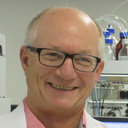Compounds from Geijera parviflora with prostaglandin E2 inhibitory activity may explain its traditional use for pain relief.
Keywords
Abstract
BACKGROUND
Australian Aboriginal people used crushed leaves of Geijera parviflora Lindl. both internally and externally for pain relief, including for toothache (Cribb and Cribb, 1981). This study tested the hypothesis that this traditional use might be at least in part explained by the presence of compounds with anti-inflammatory activity.
METHODS
A crude extract (95% EtOH) was prepared from powdered dried leaves. From the CH3Cl fraction of this extract compounds were isolated by bioassay-guided fractionation and tested for: (1) cytotoxicity in RAW 264.7 murine leukemic monocyte-macrophages, (2) prostaglandin E2 (PGE2) inhibitory activity in 3T3 Swiss albino mouse embryonic fibroblast cells, as well as (3) nitric oxide (NO) and (4) tumour necrosis factor alpha (TNFα) inhibitory activity in lipopolysaccharide (LPS)-stimulated RAW 264.7 cells. Isolated compounds were also tested for (5) antibacterial activity against a panel of Gram-positive (Staphylococcus aureus ATCC 29213 and ATCC 25923, Staphylococcus epidermidis ATCC 35984, biofilm-forming) and Gram-negative (Escherichia coli ATCC 25922, Pseudomonas aeruginosa ATCC 27853) strains by broth microdilution.
RESULTS
Eleven compounds were isolated, including one new flavone and one new natural product, with a further four compounds reported from this species for the first time. Some of the compounds showed good anti-inflammatory activity in vitro. In particular, flindersine (1) and N-(acetoxymethyl) flindersine (3) inhibited PGE2 release with IC50 values of 5.0μM and 4.9μM, respectively, without any significant cytotoxicity. Several other compounds showed moderate inhibition of NO (5, 6, 7) and TNF-α (6), with IC50 in the low micromolar range; however much of this apparent activity could be accounted for by the cytotoxicity of these compounds. None of the compounds showed anti-bacterial activity.
CONCLUSIONS
The inhibition of PGE2, an important mediator of inflammation and pain, by flindersine and a derivative thereof, along with the moderate anti-inflammatory activity shown by several other compounds isolated from Geijera parviflora leaf extract, support the traditional use of this plant for pain relief by Australian Aboriginal people.


